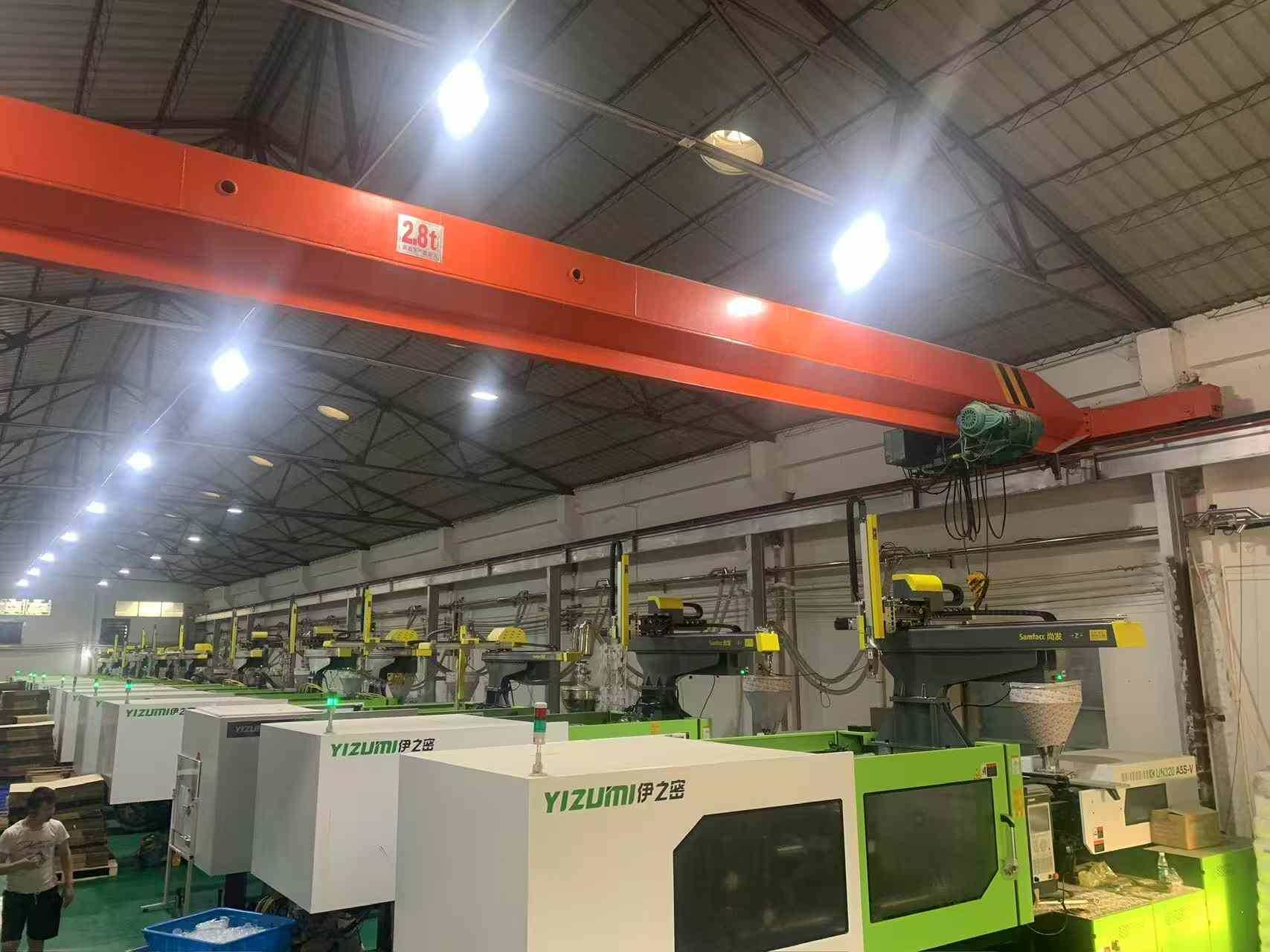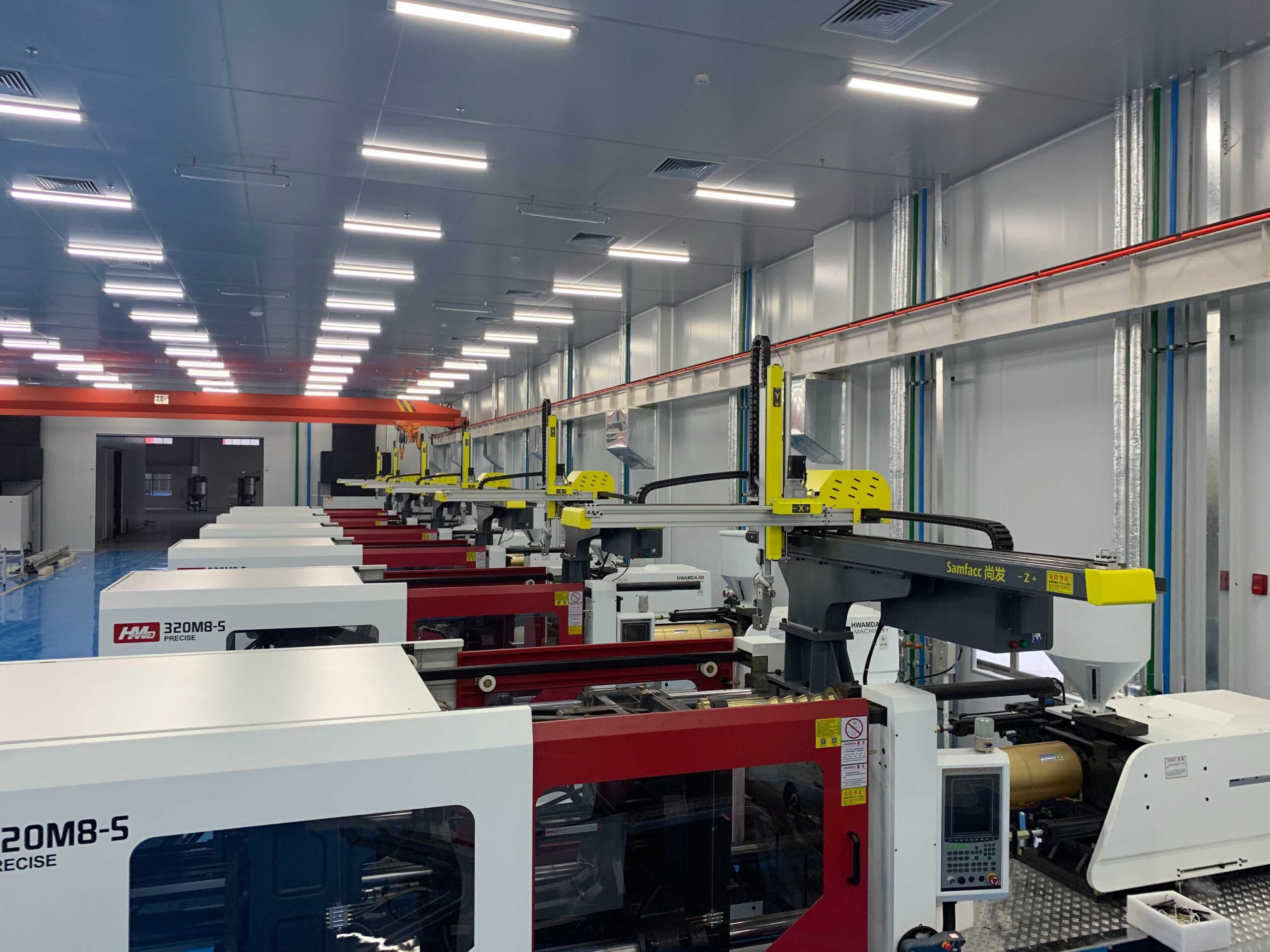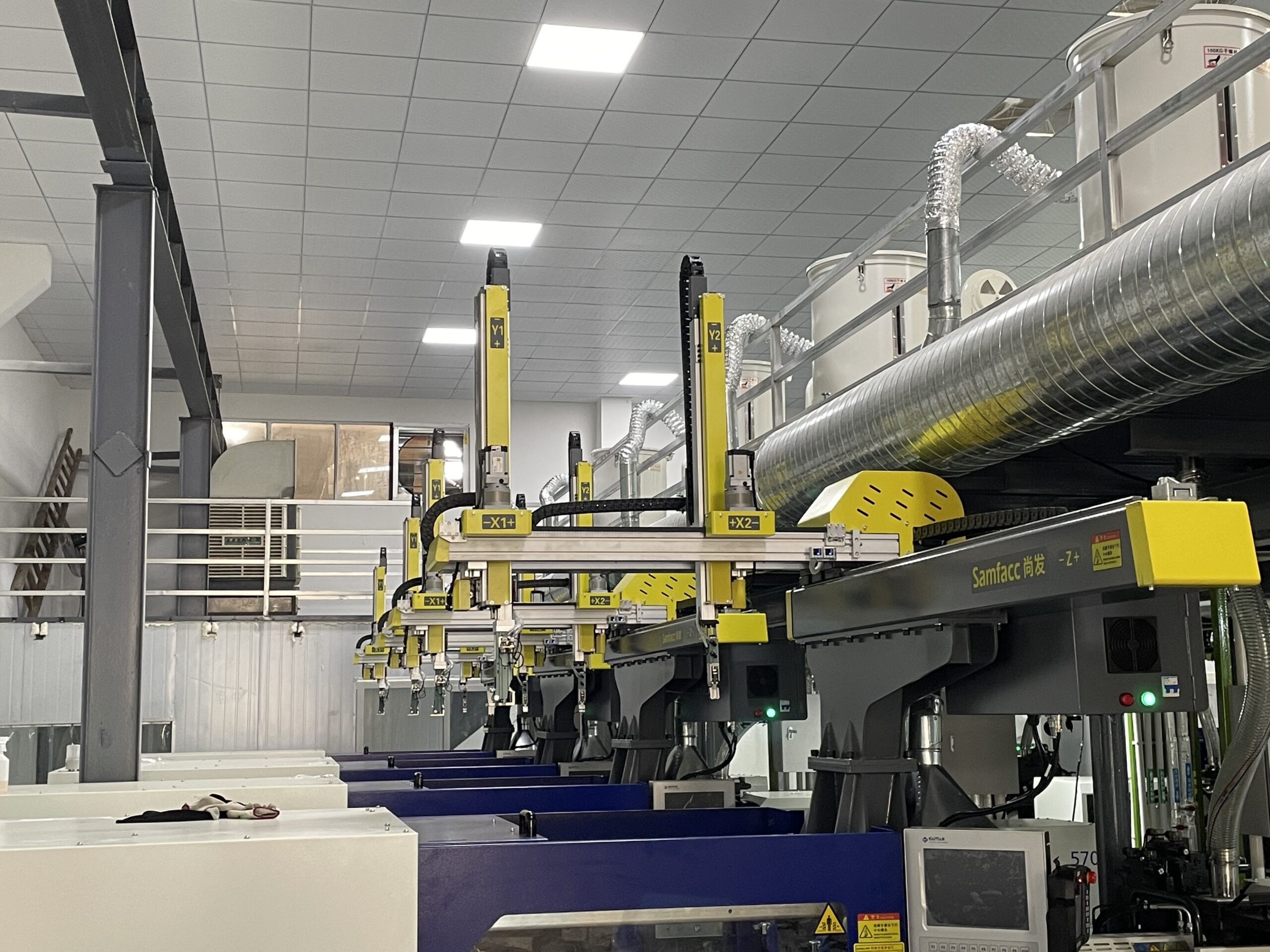In the plastic manufacturing industry, especially in the field of automated plastic production, the application of SAMFACC robots has gradually driven production automation, ensuring operational safety and improving product quality.
The Role of SAMFACC Robots in Automated Plastic Production
The integration of automation technology has made the application of robots in automated plastic production more widespread. Robots in injection molding play a particularly prominent role as they can quickly and accurately complete tasks such as picking parts, cutting gate runners, and installing in-mold inserts, significantly enhancing production efficiency. In the future, robots are expected to achieve even deeper progress in automation, better serving all aspects of automated plastic production.
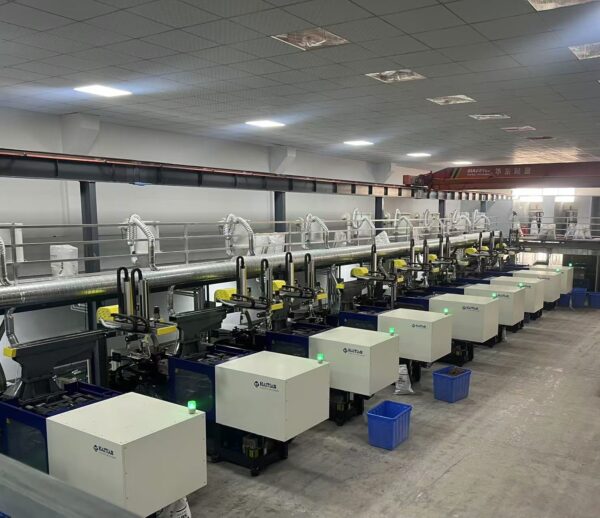
The Importance of SAMFACC Robots
Intelligence plays a crucial role. SAMFACC robots are equipped with advanced sensors and vision systems, allowing them to automatically adjust operations during plastic processing to ensure precision and repeatability, thereby improving the consistency and quality of products. With the continuous advancement of intelligence, the application of robotic arms in the plastic industry will become more efficient and precise, bringing more intelligent solutions to automated plastic production.
Collaboration
Collaboration is another important trend in the development of robotic arms. SAMFACC is capable of working collaboratively with other robots or operators, which not only improves production efficiency but also enhances job safety. In automated plastic production, collaborative robotic arms can reduce the physical strain on workers and help address labor shortages, increasing overall production efficiency.
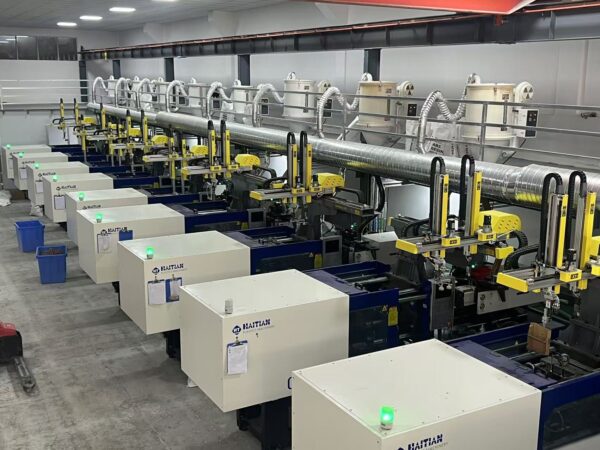
Flexibility and Remote Operation
Furthermore, SAMFACC robots are continuously advancing in terms of flexibility and remote operation. They can adapt to a variety of different plastic products and complex work environments, and remote control functionality allows operators to monitor and operate from a distance, ensuring safety and facilitating production management, making them very suitable for the complex environment of automated plastic production.
Human-Centered Design
Lastly, significant progress has been made in the human-centered design of SAMFACC robots. Their appearance and control systems are becoming more ergonomic, improving the convenience and comfort of operation and allowing operators to complete tasks more easily and efficiently during automated plastic production.
In summary
The development potential of SAMFACC robots in the field of automated plastic production is immense. As technology continues to improve, SAMFACC will play a more critical role in the plastic industry, bringing more innovation and transformation to automated plastic production.


